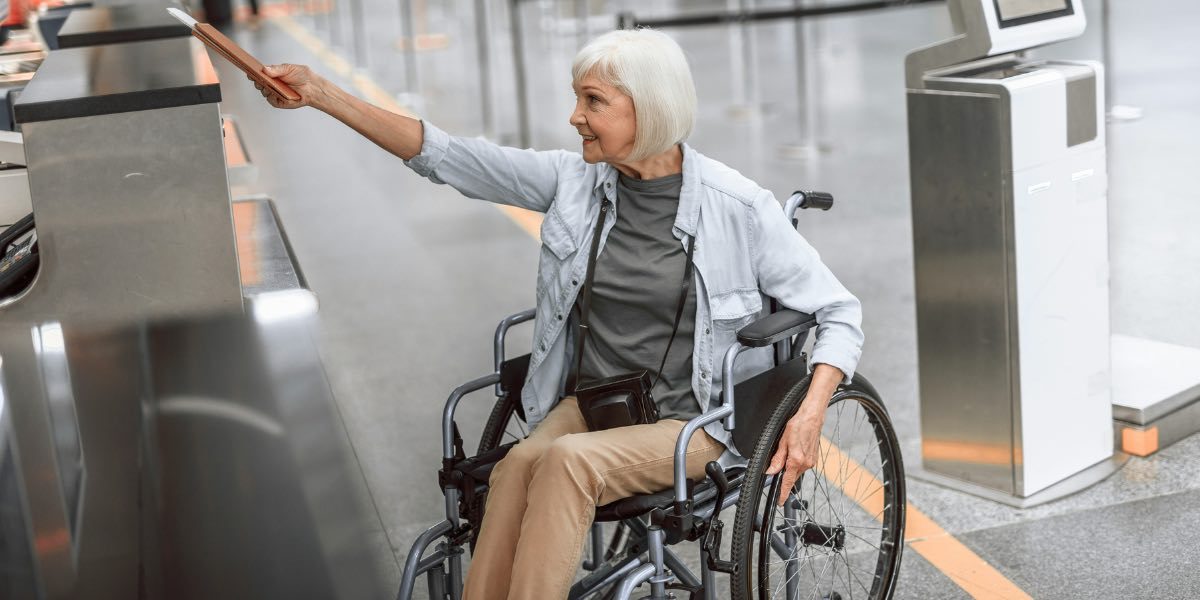Dallas’ paratransit services, designed to help individuals with disabilities access transportation, have made notable strides over the years. These services are crucial for individuals who are unable to use standard public transit due to physical or cognitive limitations. Despite the improvements in service, many challenges remain, and there is ongoing discussion about what further enhancements are necessary to meet the needs of Dallas’ diverse population. This article explores the current state of paratransit services in Dallas, areas that still need improvement, and what changes could make these services more effective and accessible.
Read also: The Broader Impact of Cycling in Urban Areas: Health, Environment, and Community Benefits
Current Overview of Paratransit Services in Dallas
The Dallas Area Rapid Transit (DART) operates the city’s paratransit services, offering door-to-door transportation for individuals who are unable to use regular buses or trains. This service aims to provide an alternative for people with disabilities, ensuring that they have access to essential activities like medical appointments, work, and social events.
Over the years, Dallas has implemented several improvements to enhance the paratransit service. One notable development is the DART paratransit reservation system, which allows individuals to schedule rides in advance, streamlining the process and making the service more user-friendly. Additionally, DART has worked to ensure that its vehicles can accommodate various mobility aids, such as wheelchairs and scooters, which has made the service more accessible.
Despite these advances, there are still areas in which paratransit services could be more efficient, responsive, and inclusive. Below are some key areas that could benefit from further improvements.
Key Areas for Improvement in Paratransit Services
While DART’s paratransit services are essential for many Dallas residents, several areas could still be improved to better serve the community. These include wait times, geographic coverage, service hours, vehicle accessibility, and customer service.
Unpredictable Wait Times and Reliability
One of the most significant concerns among paratransit users in Dallas is the issue of wait times. Many riders report that the service can be unreliable, with long delays in picking up passengers or missed appointments due to scheduling problems. Since these services are often essential for individuals with disabilities, who may rely on them to get to medical treatments or work, these delays can be especially problematic.
The current paratransit system operates on a first-come, first-served basis, and though rides can be scheduled in advance, there is still a degree of uncertainty regarding when a ride will arrive. Some passengers have reported having to wait longer than expected, which disrupts their daily plans. Improving the reliability of paratransit services—whether through better scheduling systems or the introduction of more vehicles—could address these concerns and help passengers feel more confident in their ability to plan their day around the service.
Expanding Geographic Coverage
While DART paratransit serves much of the Dallas area, there are still neighborhoods and suburban areas where coverage is limited. Individuals who live outside the more urban areas often find that they do not have easy access to the paratransit service, which can create a disparity in service availability across the city.
Expanding the geographic coverage of paratransit services could ensure that more residents have access to reliable transportation. This could involve extending service areas to include additional neighborhoods or suburban regions, as well as exploring ways to better serve rural areas surrounding Dallas. By doing so, the city would be able to offer a more equitable service for individuals with disabilities, regardless of where they live.
Extending Service Hours
Another area where improvements could be made is in the service hours of paratransit. Many individuals who rely on these services need transportation outside of standard business hours, such as for late-night shifts, evening appointments, or weekend activities. However, current paratransit service hours are often limited, making it difficult for some riders to access transportation when they need it most.
Expanding the service hours to accommodate late-night and weekend travel would better support those with non-traditional schedules. For example, many workers and medical patients need transportation during times when regular public transit is not available. By offering extended hours, Dallas could ensure that paratransit is a reliable option for all residents, not just those with daytime schedules.
Vehicle Availability and Accessibility
While DART has made efforts to ensure that its fleet of vehicles is accessible, there are still concerns about the availability and condition of accessible vehicles. Passengers who use mobility devices such as wheelchairs or scooters may find that there are not enough properly equipped vehicles available at their scheduled time. Additionally, the vehicles used for paratransit service must be well-maintained to ensure safety and comfort for passengers.
Ensuring that the fleet is consistently equipped with enough accessible vehicles and that all vehicles are kept in good condition would help increase the reliability and effectiveness of the service. Improved maintenance and regular inspections can prevent issues that may arise during rides, ensuring that passengers feel safe and comfortable during their trips.
Customer Service and Communication
Another critical aspect of improving paratransit services in Dallas is customer service. Many riders report challenges in reaching the appropriate customer service representatives or getting clear answers to their questions. When issues arise, such as scheduling conflicts or delays, it is essential that riders have access to knowledgeable and responsive support.
Improving communication channels between DART and riders could lead to better outcomes for everyone. This includes providing more accessible means of reaching customer service, improving response times, and ensuring that all staff members are properly trained to handle the specific needs of passengers with disabilities. Additionally, offering real-time updates on vehicle arrival times or potential delays could further reduce frustrations for riders and enhance their experience.
What’s Needed to Enhance Paratransit Services in Dallas?
To address these challenges, Dallas could explore a combination of solutions that would improve the overall quality and efficiency of paratransit services. These solutions would require collaboration between the local government, DART, and the community to ensure that the services offered are both effective and inclusive.
Increased Funding and Resources
One of the key requirements for addressing the current gaps in service is increased funding. Expanding service coverage, improving the fleet of vehicles, and extending service hours all come with additional costs. Allocating more resources to these areas would allow DART to better meet the needs of residents with disabilities. Public funding, as well as partnerships with local businesses or nonprofit organizations, could help provide the necessary financial support to achieve these goals.
Technology Upgrades for Improved Efficiency
Investing in technology can play a significant role in improving paratransit services. One possible upgrade is the implementation of a real-time tracking system, which would allow riders to track their vehicles and receive more accurate estimated pick-up times. Mobile apps that allow users to book, track, and manage their rides could also make the process smoother and more user-friendly.
Incorporating more efficient scheduling algorithms could help reduce wait times and make better use of available vehicles. By leveraging technology, Dallas could make the paratransit system more efficient, providing better service to riders while reducing delays.
Community Engagement and Feedback
Engaging with the community is another essential element of improving paratransit services. Riders who rely on these services may have valuable insights and suggestions that could help guide improvements. Regular feedback mechanisms, such as surveys or focus groups, could provide DART with the information it needs to address issues and make the system more effective.
Encouraging community involvement in the process of improving paratransit services can lead to better outcomes and ensure that the needs of residents with disabilities are met in a meaningful way.
Read also: The Pursuit of Joy: A Fundamental Human Right in Modern Society
Moving Forward: A More Accessible Future for Dallas
Dallas has made meaningful progress in improving its paratransit services, but there is still work to be done to ensure that these services are accessible, reliable, and efficient for all residents. By addressing issues such as wait times, expanded coverage, service hours, and vehicle accessibility, Dallas could make significant strides in offering a more inclusive transportation system for individuals with disabilities.
With continued investment in resources, technology, and community engagement, Dallas could create a paratransit system that truly meets the diverse needs of its population. By improving these services, the city would not only enhance mobility for individuals with disabilities but also ensure greater equity and accessibility in transportation for all its residents.















